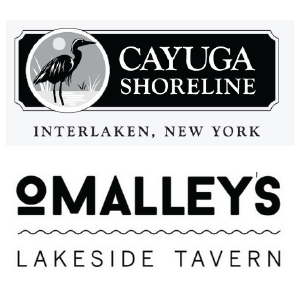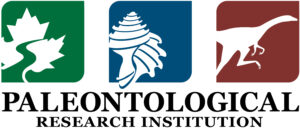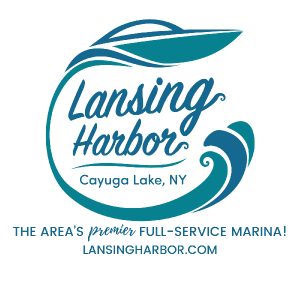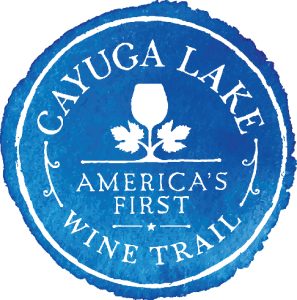The cattail marsh is an important habitat area for a wide variety of the animal kingdom – songbirds, waterfowl, fish, insects, reptiles, amphibians and mammals. Alas, it is also a habitat that vanished from the landscape as Europeans settled North America. So, we cherish our remaining marshes and marvel at the vast community that they support.
Read on to learn more about Cayuga Lake’s marshes and their place in nature and make sure you plan a trip to the Montezuma National Wildlife Refuge on your visit to Cayuga Lake to experience firsthand some the marshes residents.
Cayuga’s Cattails
by Mel Russo
Cayuga’s marshes are a precious macro-commodity of our lake. These micro-biomes usually form over a soft, shallow lake bottom and often around the mouth of a stream. Heading north from Ithaca along the west side of the lake on Route 89, the first substantial marsh to be encountered is Canoga Marsh, a wetland formed around the delta of Canoga Creek. Well over 100 acres, this wetland covers about three thousand feet of the northeast shoreline of Cayuga Lake. The marsh begins immediately south of the hamlet of Canoga at North Parker Road where, many years ago, the area between the marsh and the lake was filled in to accommodate a road for cottages and camps. Continuing to the immediate west of this access road the wetland area persists. Canoga Marsh spans northward, fronting the lake shore of the Hamlet of Canoga and extending almost to the Lower Lake Road entrance off of Route 89. The marsh is visible from the highway slightly north of the hamlet of Canoga. Otherwise to experience the marsh more closely, one would have to drive down one of the private lanes that lead to the “hard pan” shoreline such as that found at Canoga Island. A good portion of the marsh is owned privately and well managed while the balance is managed by the New York State Department of Environmental Conservation and owned by the New York State taxpayers. The Cayuga Lake Watershed Network (CLWN) has this marsh listed as a “priority” in The Cayuga Lake Restoration and Protection Plan 2017 .
A substantial wetland a few miles north of Cayuga Lake State Park and visible from Route 89 is the Cayuga Marsh. Consisting of about 30 acres, this wetland begins at the lower lake road extension and runs northward along the shore and across the lake around the area of Silver Bridge. This area is managed by the New York State Department of Environmental Conservation and consists almost entirely of the broadleaf cattail (Typha latifolia) along with a small amount of other herbaceous wetland plants.
Further north of Cayuga Lake is the magnificent 10,000-acre Montezuma National Wildlife Refuge consisting of cattails, rushes, other herbaceous plants and open pools. According to the
U.S Fish & Wildlife Service, the refuge serves as habitat to over 240 species of birds (at one time or another) and more than 70 species of mammals and amphibians. The refuge is a consequence mostly of ancient terminal moraine subsequent to the last glacier.
Some small, cattail marshes exist in the sheltered, bay and harbor areas of the northeast side of the lake but none in comparison to those of the northwest side of the lake. The east side of Cayuga is otherwise battered too much by the prevailing westerly winds to maintain a substantial stand of cattails.
Prior to 1890, an extensive wetland of several hundred acres existed at the south end of Cayuga Lake known as Renwick Marsh. The creation of this area was naturally facilitated by the entrance of four tributaries into the lake: Fall Creek, Cascadilla Creek, Six Mile Creek and Cayuga Inlet. The marsh and its inhabitants were the subject of many scientific papers at Cornell University and Ithaca College. In 1890 a portion of the marsh was filled in to accommodate an amusement park. Later Cass Park, Stewart Park, a municipal golf course, and a flood control channel were constructed within the marsh which further filled in and drained the land. Only a small portion of Renwick remains today.
The dominant species of plant in all of these marshes is the broadleaf cattail (Typha latifolia)). It is useful as nesting and living substrate for many species of waterfowl, other vertebrates and invertebrates. The roots and young shoots are also useful as food to the various animals of the area. If accessible, ducks and geese may eat the roots of the cattail. Muskrat (Ondata zibethicus) not only savor the roots and young stems as food but also use the leaves of the cattail to construct their lodges. Muskrat lodges not only serve as cover and nesting for the muskrat, but also can be symbiotically infested with birds, snakes, other reptiles and amphibians. The common tern may use the structure as a nesting site: such are the interrelated lives of marsh animals. Fish such as the largemouth bass, blue gill, pumpkin seed and the bowfin (a rare, ancient fish) like to hang out around the edges and open waters of the cattail marsh. The list and stories evolve as species interact.
For human use, the roots – minus the rind – are edible and tasty. Care must be taken to rinse the roots with chlorinated water before consumption in order to kill harmful bacteria and protozoans. The leaves of the cattail are used for caulking whiskey barrels. Additionally, weaving the leaves can produce some durable rush bottom furniture.
Cattails can reproduce sexually by self or cross pollination. The male (staminate) portion of the fruiting body is located at the top of the “tail” while the female (pistillate) portion of the tail is the larger, lower part of the fruiting body. These produce areal seeds that can colonize waters of a considerable distance away. Ecologically more important, the cattail can reproduce by underwater rhizomes which form a dense, intertwined mat at and just under the water’s surface. This creates a firm substrate for nesting and general habitation for wetland organisms.
Occasionally wave action may cause a large piece of the marsh consisting of several hundred square feet to break away from the contiguous marsh. Over the centuries, this factor has served to overcome the significant, genetic barrier created by substantial water surface between relatively non-contiguous land masses. Not only are the associated plants of the floating marsh transported to new locations, but so are whatever vertebrates and invertebrates inept to trans- aquatic travel in this circumstance enabled to colonize a new area or achieve an opportunity to mingle their genes into a previously inaccessible gene pool.
In the 1800’s a rather useless plant, purple loosestrife (Lythrum salicaria), was introduced into this country from Europe or Asia probably as an ornamental. Although a pretty plant, it has taken over much of the living space of the cattail and has done much damage to our cattail marshes. It has no food or nesting value for wildlife. In addition, Lythrum is a more dominant and aggressive species than our native plants. Biological control of purple loosestrife using several species of beetles and a weevil, not harmful to our indigenous plants, was introduced in the 1800’s to combat the infestation of the purple flowering plant. Pulling the plant by hand is also an effective means of control.
The area of our lakeside cattail marshes is shrinking due to the annual lowering of lake levels of Cayuga Lake and subsequent freezing of the exposed root systems at the outer edge of the cattail network. Perhaps a grant is in order to somehow maintain the water level around our precious cattail marshes so that they may better thrive and continue to provide benefits for both wildlife and humans.
To experience a pleasing and exhilarating harbinger of spring, one should get close to a cattail marsh in very early weeks around the vernal equinox and listen for the melodious “kon-kor- eeee…” of the male red-winged black bird (Agelaius phoeniceus) as it skillfully harmonizes with itself using its extraordinary vocal capability. The youngest males are among the first of all small migratory birds to arrive north. Their favorite place to court and advertise their territory is the cattail marsh.
Edited by Susan Backlund
© 2018 Mel Russo All Rights Reserved.
Top-Tier Supporters of the Cayuga Lake Scenic Byway, Inc. Enjoy the Ride!














